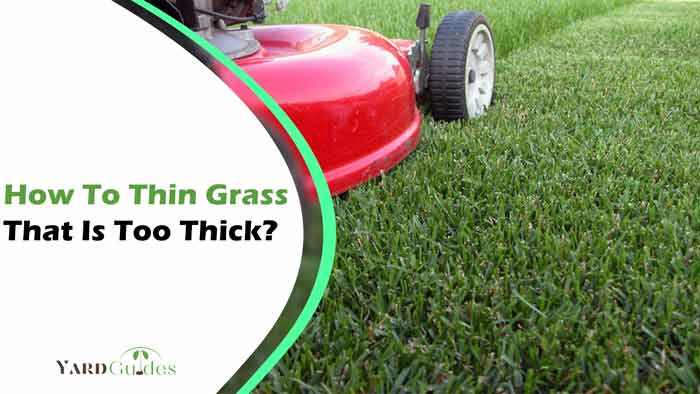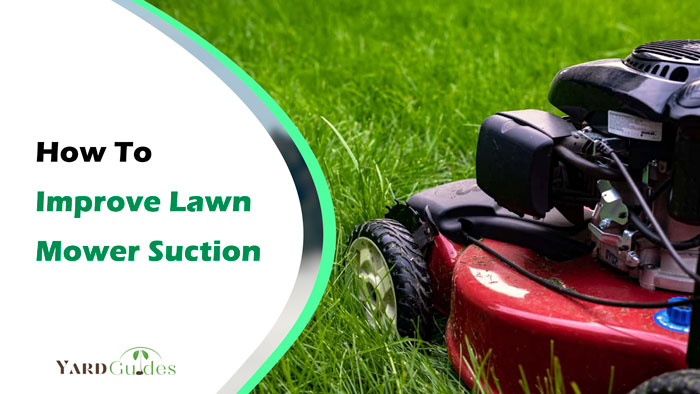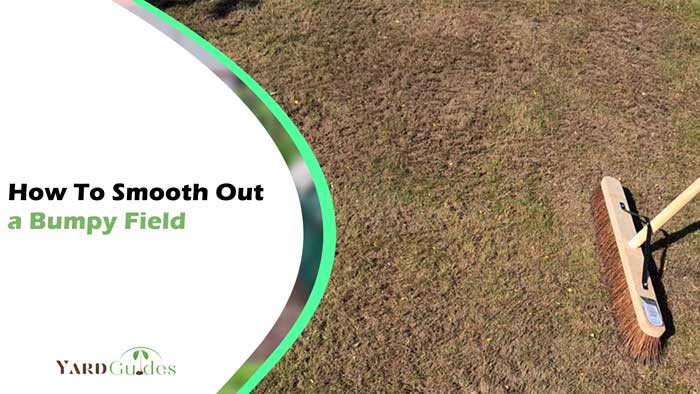A thick lawn can make it difficult for sunlight, water, and nutrients to penetrate the soil level. This can lead to unhealthy grass growth, brown patches, and an increase in weed growth. Thinning out the grass can help promote healthy growth.
Then how to thin grass that is too thick? The 3 most effective methods include vertical mowing, dethatching, and raking to thin your lawn. These methods help trim your lawn, remove thatch, and improve aeration. The important part is to ensure you fully water your lawn a few days beforehand to make the grass blades more pliable and prevent heat stress.
We’ll provide you with 3 tips for thinning grass that is too thick, including maintenance tips. Read on to learn more!
How To Thin Grass That Is Too Thick – 3 Most Effective Methods
Verti-mowing, raking, and dethatching can all help to create a healthier lawn and reduce the risk of disease and pests. Read more to choose the best method for your lawn and follow the step-by-step guide to achieve the desired results.
| Method | Purpose |
| Verti-mowing | Cuts through grass and turf, removing debris |
| Raking | Pulls out thick clumps of dying roots and grass |
| Dethatching | Cuts through the thatch, loosening it up for easy removal |
Let’s discuss all 3 methods to get insight into them.
1. Verti-Mow the Lawn
Verticutting involves using a special verticutter, which has vertically oriented blades that cut into the soil to remove excess thatch and grass. Here are the steps to follow when using this method to thin grass that is too thick:
Step 1: Choose the right time
The best time to verti-cut your lawn is during the growing season when the grass is actively growing. This allows the grass to recover quickly after the cutting and ensures that it will continue to grow and fill in any gaps.
Step 2: Mow your lawn
Before you start verti-cutting, mowing your lawn to a height of around 1-2 inches is important. This will make it easier for the verti-cutter blades to penetrate the soil and cut through the grass.
Step 3: Adjust the blade depth
The next step is to adjust the blade depth on your verticutter. For thicker grasses, such as Bermuda or Zoysia, the blades can typically be set to a depth of ½ inch to ¾ inch. This depth allows the blades to penetrate the soil and cut through the thick thatch layer, without damaging the grass roots.
For less thick grasses, such as Fescue or Kentucky Bluegrass, the blades can typically be set to a depth of ¼ inch to ½ inch. This shallower depth still allows for effective thatch removal, while minimizing the risk of damaging the grass roots.
Step 4: Verticut your lawn
Once you have adjusted the blade depth, it is time to start verticutting your lawn. Begin by making one pass over your lawn, overlapping each pass slightly. This will ensure you remove as much excess thatch and grass as possible.
Step 5: Remove the debris
After you have finished verticutting, removing the debris from your lawn is important. You can do this by raking up the excess grass and thatch and disposing of it.
2. Use A Rake
A rake is a gardening tool with a long handle and a series of long, thin, and often curved tines, used for gathering leaves, grass, and other debris from lawns or gardens. While exhaustive, raking is a more cost-effective solution for thinning out thick grass by removing excess debris and dead grass. Here are the steps to follow to thin grass that is too thick using a rake.
Step 1: Prepare the lawn
Begin by removing any debris or clutter on the lawn, including sticks, toys, and other objects that could interfere with the raking process. You should also mow the grass to a shorter height, making it easier to see and remove any dead or decaying grass.
Step 2: Choose the right rake
When choosing a rake, consider the type of grass you have, the lawn size, and your physical strength. For a large lawn with thick, dense grass, you may use a wide, heavy-duty rake that can easily penetrate the grass.
Step 3: Rake the lawn
Starting at one end of the lawn, hold the rake at a 45-degree angle and pull it toward you, lifting the grass blades as you go. Make sure to use short, deliberate strokes and focus on one area at a time to avoid overexerting yourself. Continue raking until you have removed a lot of dead grass and debris.
Step 4: Dispose of the debris
Once you have raked up the excess grass, collect it into piles using a leaf rake and dispose of it in a compost bin or yard waste bag. Removing the debris prevents it from suffocating the grass and allows it to grow and thrive.
3. Use A Dethatcher Tool
Dethatchers, also known as power rakes, typically have rotating blades or tines that penetrate the thatch layer and pull it up to the surface, where it can be collected and removed.
In this case, motorized dethatchers are more powerful than manual dethatching tools like a thatching rake or a scarifier. They are often used on larger lawns with thicker thatch layers, usually over half an inch.
Now, when using a dethatcher, it’s best to adjust the depth settings carefully so that the tines only penetrate the surface layer of the soil and don’t dig too deeply. According to Colorado State University, deep power raking can be damaging, often removing a significant portion of the living turf.
It’s also a good idea to make multiple passes over the same area, gradually lowering the depth with each pass to avoid going too deep too quickly.
Additionally, it’s important to avoid using a dethatcher on wet or soggy soil, as this can increase the risk of damaging the turf. It’s best to wait until the soil has dried out somewhat before using a dethatcher.
What To Do After Thinning Grass
After thinning grass, there are several steps you can take to ensure that your lawn stays healthy and lush:
- Water the lawn: Give it good watering to help it recover from the stress of being thin. Make sure to water deeply, so the water penetrates the soil and reaches the roots.
- Fertilize: Apply a fertilizer high in nitrogen to promote healthy grass growth. Follow the packaging instructions for the appropriate amount to apply.
- Overseed: To fill in any bare spots or thin areas, overseed your lawn with grass seed. Be sure to choose a seed appropriate for your region and the conditions of your lawn.
- Aerate: Aerating your lawn can help loosen compacted soil, improving the grass’s health. You can rent an aerator, or you can hire a professional.
- Keep the lawn mowed: Regularly mowing your lawn can help encourage healthy growth. Be sure to keep the blades sharp and adjust the height of the mower to avoid cutting the grass too short.
Remember that giving the grass time to recover after thinning it out is important. Thus, gradually thinning out the grass over some time, rather than all at once, can help minimize the grass’s stress and encourage healthy growth.
Benefits Of Thinning
Thinning a thicker lawn can provide several benefits, including-
- Improves aeration
- Reduces water usage
- Increases nutrient absorption
- Enhances weed control
- Improves the appearance of the lawn
- Improves mowing experience
Conclusion
Achieving a healthy, visually-appealing lawn may be difficult if your grass is too thick. A dense lawn can lead to issues such as poor air circulation, disease, pests, and water runoff. Fortunately, you can use a few tactics to thin it out, such as vertical mowing, raking, and removing any excessive thatch.
If you stick to your lawn care routine and take these steps, you should soon see your lawn improving. Effective lawn care routine tips after thinning include regular mowing, aeration, proper fertilizing, and appropriate watering. With a little patience and effort, you’ll enjoy a lush, healthy lawn that is the envy of your neighborhood.



